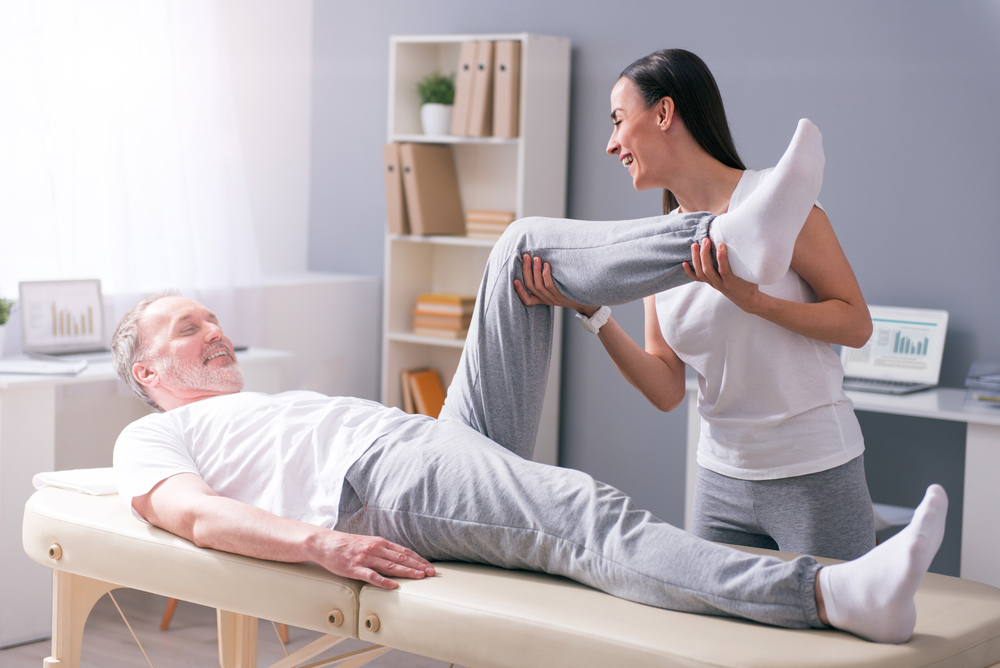With more people seeking convenient and personalized healthcare options, physical therapy at home in Riyadh {العلاج الفيزيائي في المنزل في الرياض} is rapidly gaining popularity. It offers the same professional care you’d receive in a clinic—delivered right to your doorstep. Whether you’re recovering from surgery, dealing with chronic pain, or improving overall mobility, doing physical therapy at home gives you flexibility, comfort, and consistent results.
Here’s a complete guide covering everything you need to know before starting your home-based therapy journey.
What Is Physical Therapy at Home:
Home-based physical therapy is a rehabilitation service where licensed therapists visit your home or guide you virtually to help you regain movement, strength, and function. It is often used for injury recovery, post-operative care, neurological conditions, or mobility support for seniors.
Common conditions treated at home:
- Post-surgical recovery (e.g., knee or hip replacement)
- Chronic joint or muscle pain
- Stroke rehabilitation
- Back or neck pain
- Mobility and balance issues
- Arthritis and age-related conditions
It’s a highly effective and safe option for people who have trouble traveling or prefer privacy and convenience.
How Home Physical Therapy Works:
The process starts with a thorough assessment followed by a personalized treatment plan tailored to your condition, environment, and lifestyle.
What you can expect:
- Initial assessment by a licensed physiotherapist
- Customized therapy plan created for your specific goals
- One-on-one guided sessions at home or via video
- Ongoing adjustments as you progress
Therapists may also teach you exercises to perform on your own between sessions, accelerating your recovery.
Advantages of Doing Therapy at Home:
Many people find at-home care even more effective than clinic visits because of the focused attention and convenience it offers.
Key benefits include:
- No need to travel: Saves time, especially in large cities
- Higher comfort level: Familiar surroundings reduce anxiety
- Personalized care: 100% attention from your therapist
- Improved adherence: Easier to stick to sessions when done at home
- Real-life functionality: Exercises tailored to your actual living space
It’s also ideal for individuals with limited mobility, making physical therapy more accessible.
Setting Up Your Home for Therapy:
You don’t need a home gym to get started—just a clear, safe, and quiet space.
Tips for creating your therapy space:
- Choose an open area free from clutter or sharp furniture
- Use a yoga mat or non-slip rug for floor exercises
- Keep a sturdy chair or table nearby for support
- Gather small equipment like resistance bands, light weights, or foam rollers
- Ensure good lighting and ventilation
Make it a dedicated space where you can focus without distractions.
What Equipment You Might Need:
Your therapist may suggest minimal equipment to support your sessions, but most exercises rely on bodyweight or household items.
Basic tools that may be recommended:
- Resistance bands
- Ankle weights or dumbbells
- Balance cushions or stability balls
- Massage balls or foam rollers
- Step stool or stairs for mobility work
All equipment should be based on your therapist’s recommendations and comfort level.
How to Ensure Safe and Effective Sessions:
Safety is critical when exercising at home, especially without constant supervision.
Follow these safety tips:
- Always warm up before starting your session
- Focus on posture and form, not just speed or repetitions
- Keep water nearby and take breaks if you feel fatigued
- Stop immediately if you experience sharp pain or dizziness
- Communicate regularly with your therapist about how you feel
Progress should be gradual—avoid pushing yourself too hard too quickly.
Staying Consistent with Your Program:
Consistency is the most important factor for seeing results. Treat your therapy time as a non-negotiable appointment.
Ways to stay on track:
- Schedule your sessions in a calendar or planner
- Set daily reminders on your phone
- Keep a recovery journal to track progress and pain levels
- Involve a family member or caregiver for support
- Celebrate small wins to stay motivated
Remember, small daily actions lead to long-term success.
Virtual vs. In-Person Home Therapy:
Depending on your location, mobility, and preferences, both options can be equally effective.
In-person sessions:
- Therapist visits your home physically
- Best for hands-on assistance and post-surgical recovery
- Great for elderly or high-risk patients
Virtual sessions:
- Conducted via video call
- Ideal for those comfortable following instructions
- More flexible scheduling
- Often more affordable
Your therapist will help you decide which method is right for your condition and lifestyle.
How to Find a Qualified Therapist in Riyadh:
Choosing the right provider is crucial for getting the most out of your therapy experience.
Look for:
- Licensed and experienced physiotherapists
- Specialization in your condition or injury
- Good client reviews or testimonials
- Availability for in-home or virtual sessions
- Clear communication and follow-up processes
Many professionals offering physical therapy at home in Riyadh can be found through online directories, referrals, or local rehabilitation clinics.
Final Thoughts:
Doing physical therapy at home is not just a convenience—it’s an empowering approach that lets you take control of your recovery in your own space and time. With personalized plans, expert guidance, and a safe environment, your home can become the perfect place to heal, strengthen, and improve mobility.
Whether you’re dealing with a recent injury or managing a long-term condition, starting home therapy is one of the smartest investments you can make for your health. And for residents of Riyadh, it’s never been easier to access professional care without leaving the house.
Would you like SEO meta tags (title, description, keywords) or a call-to-action section to help complete the article for publishing?

